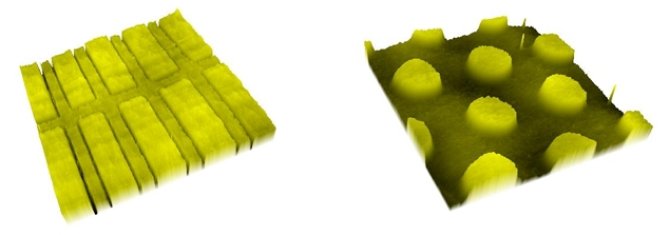
Organic Monolayers onto Oxide-Free Silicon
Introduction:
Organic monolayers on oxide-free silicon are directly bound to Si through a chemically and thermally stable Si-C bond. The absence of an intervening SiO2 layer results in a well-defined monolayer-silicon interface that allows direct electronic coupling between the organic functionality and the silicon substrate. As a consequence these monolayers possess great potential in the field of molecular electronics and biosensing. Nevertheless, the chemistry of oxide-free silicon is underdeveloped with respect to that of e.g. gold and silicon oxide/glass surfaces because preparation of ω-functionalized monolayers on H-Si is pretty difficult and pattering by soft lithographic techniques like microcontact printing (µCP).Goal:
Our research is focused on exploring new and mild methods for monolayer assembly onto oxide-free silicon to improve monolayer quality and allow integration of functional groups. The resulting ω-functionalized monolayers can act as an intermediate for introducing a broad range of interesting functionalities for biosensing and molecular electronics. Furthermore, we concentrate on patterning of these monolayers by photolithographic and soft lithographic techniques.

by photolithography; 10 x 10 µm (left) and microcontact printing; 22.5 x 22.5 µm (right).
Fields of interests:
surface chemistry, organic monolayers, micro and nanofabrication, biosensing, molecular electronics, conducting polymers